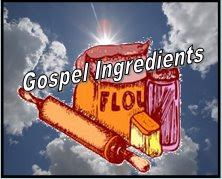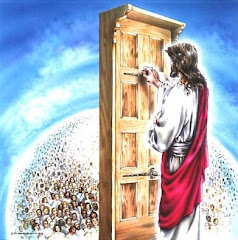 |
| Click on Picture for artwork info |
That is why we read in both the Old and New Testament, from the account of Noah's Ark to the miracles of Jesus, where God conveys his truth to us by pictures. Real events, but recorded in such a way as to provide deeper truth in pictures.
In order to understand the meaning of these pictures, we need keys to understand the various symbols that appear throughout these stories. Where are these keys? God desires that we understand his truths so he does not hide the keys some place where only Indiana Jones can find them; he places them in plain sight on the surface of the scriptures.
For example, we read in Isaiah where God says that his word is like the rain that falls to the ground from heaven; watering the ground and retuning back to him only after it has accomplished his purpose of producing abundant blessing on the earth. (Isaiah 55:8-13)
Let us now turn to the story of the first miracle of Jesus where he turned water into wine. We shall see how the truth symbolically portrayed there gives an answer to two important questions.
At the beginning of his earthly ministry, Jesus attended a wedding in Cana with his disciples where the wine ran out. Mary, the mother of Jesus, asked him if he could help fix the problem. In response, Jesus instructed some servants to fill six stone water jars with water. They obeyed him and the water in the jars miraculously turned to wine; and much better wine than what was previously on hand (John 2:1-11).
Let's look at the symbols: First as we just saw in Isaiah, water is a symbol of God's words. Second, we see nameless servants who do the bidding of Jesus. Who are these servants? That's easy, they represent the relatively nameless servants of Jesus; starting with his twelve disciples but also including his servants today who obediently pour the water of God's words into water jars. The Holy Spirit is also a nameless servant in bible typology and is very much in the midst of the Lord's servants, empowering them and convicting the recipients of the truth of God's word (John 16:7-11).
Third, what do the six stone water jars represent? Various vessels (jars, well buckets, baskets, etc) represent the body of man as a 'traveling case' for the soul (2Cor.4:5-7, 2 Tim 2:20-21). This is underscored by the number of jars, six, which is the number that represents fallen man (Rev.13:18). Into these vessels is collected many odds and ends over the course of a day and a life, but when the word of God is poured into the jar, wine can be the result.
Finally, what does the wine symbolize? Wine has two symbols; both are very applicable to the double meaning of this miracle.
First, wine is symbolic of blood as Jesus explains during the last supper with his disciples (Matt.26:27-28); the blood of Jesus is the only cleansing power able to wipe clean the inside of our sin encrusted water jars. But this cleansing can only take place after we combine faith with the water of the words of the gospel that have been poured into us from some relatively nameless servant of the Lord.
God demonstrates a further truth in this wedding miracle at Cana by the second meaning of wine---joy (Psalm 4:7, 104:15). The word of God, poured into the heart of a sinner, when combined with faith produces both cleansing blood and brimming joy.
The truth about joy is also taught by Jesus in the Vine and branches passage of the gospel of John where Jesus is the Vine and those connected to him are the branches: "These things have I spoken unto you, that my joy might remain in you, and that your joy might be full. This is my commandment that ye love one another, as I have loved you" (John 15:11-12). In other words, Jesus has poured water in water jars in order that it be turned into the wine of overflowing joy. He summarizes this water as: love of one another as he has loved us.
In the water to wine miracle, as well as the Vine and branches passage, God presents a picture lesson for those he created about how joy works.







